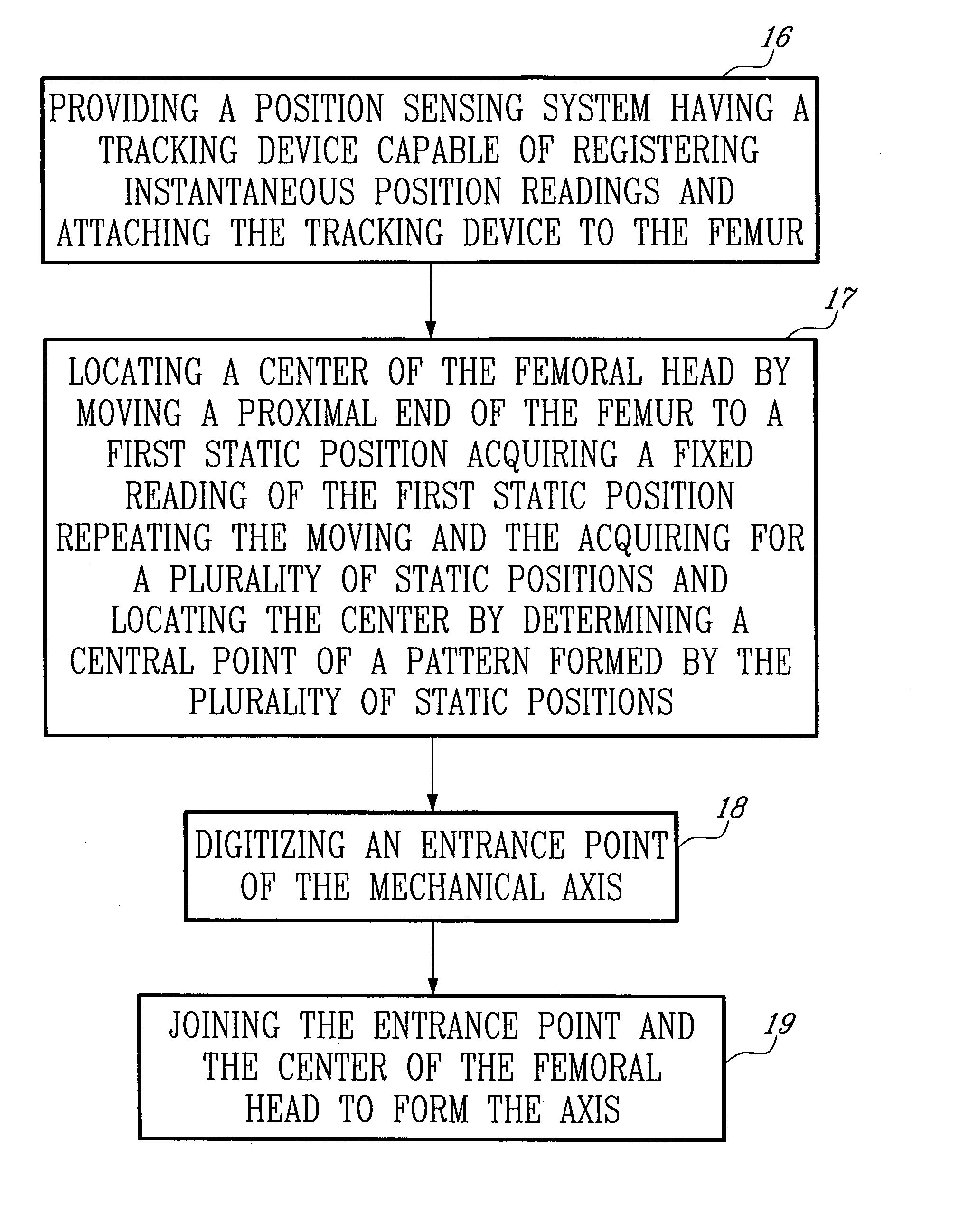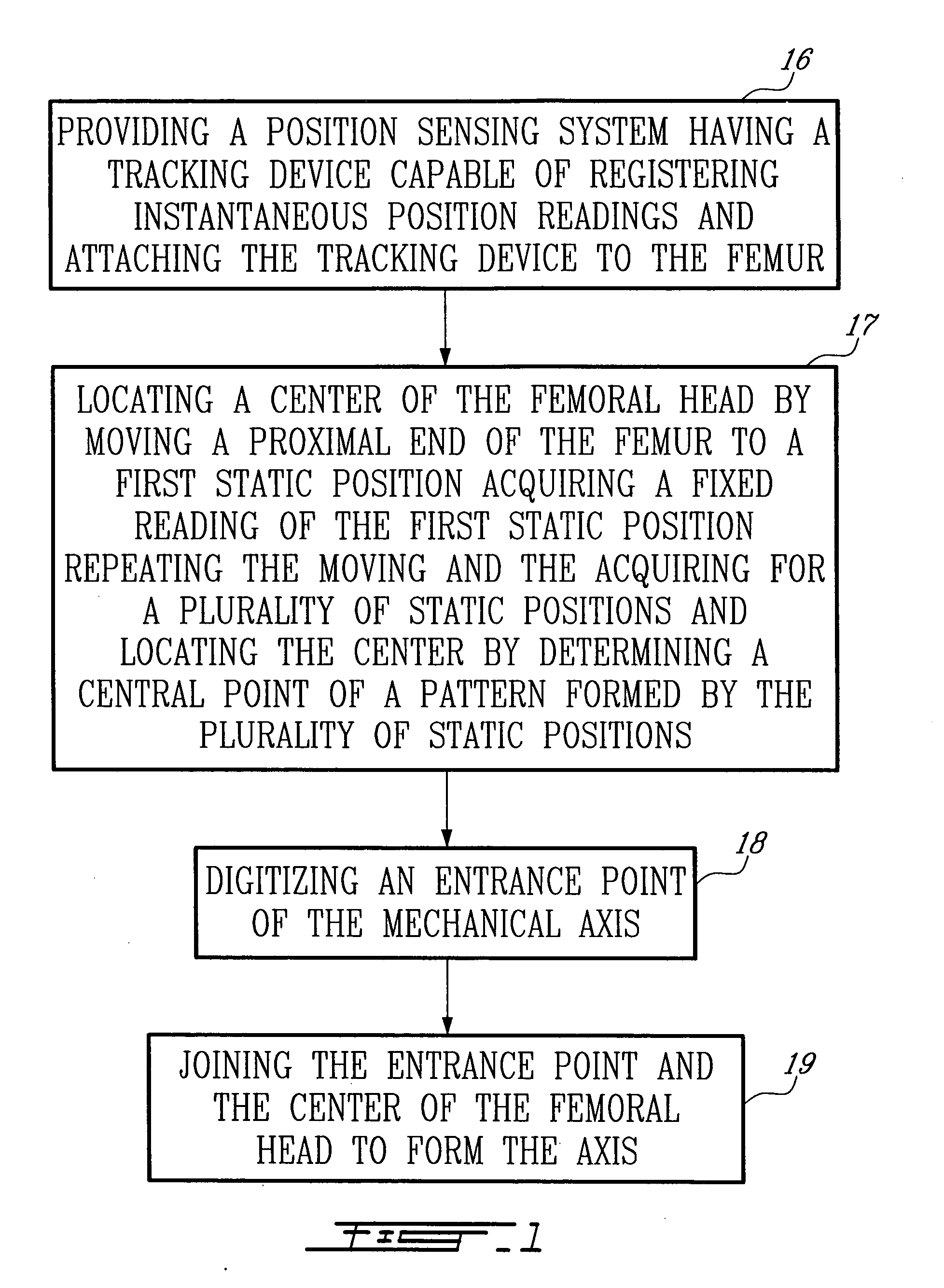Method for locating the mechanical axis of a femur
a technology of mechanical axis and femoral head, which is applied in the field of computer assisted surgery, can solve the problems of introducing further errors into measurement, affecting the quality of readings, etc., and achieves the effect of improving accuracy and overcoming the influence of tracking nois
- Summary
- Abstract
- Description
- Claims
- Application Information
AI Technical Summary
Benefits of technology
Problems solved by technology
Method used
Image
Examples
Embodiment Construction
[0017] In a preferred embodiment of the invention, a Polaris™ optical camera is used with a Navitrack™ system sold by Orthosoft, Inc. A femoral tracker is optimally placed at an anterior position with respect to the sagittal anatomical axis and a lateral position with respect to the frontal anatomical axis. Ideally, the anterior position should be about 45 degrees and the lateral position should be about 10 degrees. The position to optimize accuracy for the bone trackers is about 12 cm from the knee joint facing the camera.
[0018]FIG. 1 is a flowchart describing the steps used to determine the mechanical axis of the femur bone during surgery. The first step is to provide a position sensing system having a tracking device capable of registering instantaneous position readings and attaching the tracking device to the femur 16. The next step is to locate the center of the femoral head 17. This point will be used in calculating the mechanical axis. To locate the center of the femoral he...
PUM
 Login to View More
Login to View More Abstract
Description
Claims
Application Information
 Login to View More
Login to View More - R&D
- Intellectual Property
- Life Sciences
- Materials
- Tech Scout
- Unparalleled Data Quality
- Higher Quality Content
- 60% Fewer Hallucinations
Browse by: Latest US Patents, China's latest patents, Technical Efficacy Thesaurus, Application Domain, Technology Topic, Popular Technical Reports.
© 2025 PatSnap. All rights reserved.Legal|Privacy policy|Modern Slavery Act Transparency Statement|Sitemap|About US| Contact US: help@patsnap.com



